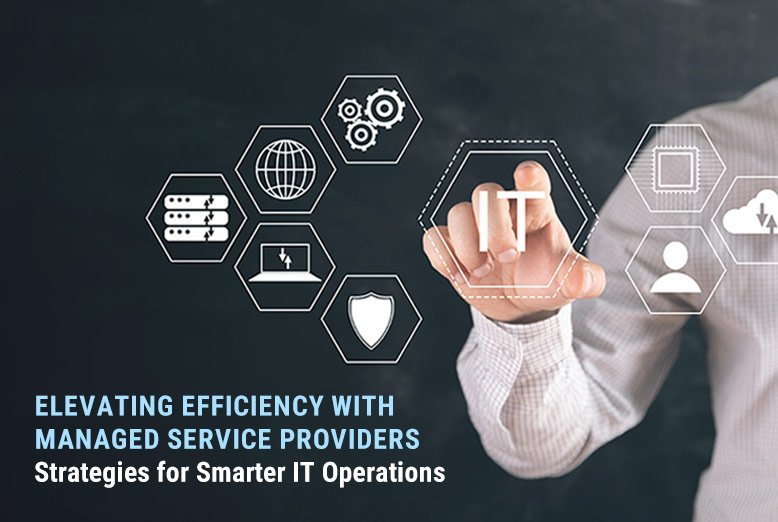Why Modern Businesses Embrace Managed Service Providers
Managed Service Providers (MSPs) have become indispensable for businesses navigating today’s IT requirements. As organizations manage distributed workforces, contend with increasing cybersecurity threats, and maintain complex IT infrastructures, MSPs offer solutions to reduce strain and improve performance.
Studies illustrate why these services are vital: downtime costs average businesses $5,600 per minute, and 62% of small to mid-sized companies lack the in-house expertise to handle IT challenges effectively. MSPs address these pressures with predictable costs, around-the-clock monitoring, and access to specialized knowledge that’s otherwise difficult to retain in-house.
The ability to proactively monitor systems and resolve issues before they escalate is a major driver for adoption. Flat monthly fees help organizations manage budgets while scaling their IT services seamlessly. As MSPs alleviate operational burdens, internal teams can refocus on strategic tasks, helping businesses stay agile in today’s demanding environment.
Key Capabilities Offered by IT Service Management Firms
MSPs deliver a wide range of IT operations support designed to improve functionality and reduce risks. Core capabilities include:
- 24/7 Network Monitoring: Many providers guarantee a 99.9% uptime SLA, ensuring systems remain operational with minimal disruptions.
- Incident Response: Rapid response times, often within 15 minutes, mitigate security breaches and system failures.
- Patch Management: MSPs regularly update software to protect against vulnerabilities, reducing maintenance delays for internal teams.
- Cloud Orchestration: Support for cloud migration and hybrid environments ensures optimal configuration and performance.
- Help-Desk Support: Dedicated help desks meet end-user needs, often reporting high satisfaction rates with efficient ticket resolution.
Emerging offerings include AI-driven analytics for better insights and zero-trust architecture to strengthen cybersecurity. These advanced features allow MSPs to anticipate future IT developments, positioning businesses for long-term success.
| Service | Typical Metric | Example Outcome |
| Network Monitoring | 99.9% Uptime | Less than 5 hours of downtime annually |
| Incident Response | 15-Minute Response | Faster recovery from disruptions |
| Help-Desk Support | 90% First-Call Resolution | User issues addressed without escalation |
Avoiding Common Pitfalls with Outsourced IT Partnerships
While MSPs can deliver significant value, choosing the wrong partner can lead to challenges. Common risks include:
- Misaligned Expectations: Poorly defined contracts or unclear service scopes may lead to unmet needs.
- Hidden Fees: Some providers charge extra for services regarded as standard by others.
- Vendor Lock-In: Limited interoperability with existing tools can make transitioning difficult.
To avoid these issues, businesses should ask targeted questions like, “What’s your escalation path for major incidents?” or “How do you approach cost transparency?” Developing a mini RFP or scoring rubric with priority metrics (e.g., cost, security expertise, SLA adherence) simplifies comparison. Vetting thoroughly reduces the risk of disruptions down the line.
Measuring Performance and ROI with Your Managed IT Partner
To judge the effectiveness of an MSP, evaluate clear metrics such as SLA adherence rates, mean time to resolution (MTTR), and customer satisfaction scores. Cost-saving calculations comparing MSP expenses against the cost of an in-house team also highlight the financial impact.
Set up quarterly business reviews to analyze performance trends and adjust goals. Dashboards enable real-time tracking, providing visibility into outcomes such as uptime percentages and issue resolution efficiency. If your business needs specialized support, consider engaging with a managed services organization that prioritizes transparency and reliable results.
By monitoring key data points consistently, businesses ensure that their MSP delivers value while adapting to changing requirements.
Charting Next Steps: Scaling with Strategic IT Service Management
A successful MSP partnership doesn’t stop after onboarding. Organizations should periodically assess their evolving needs and explore additional modules, such as enhanced cybersecurity, compliance support, or DevOps expertise. Scalable solutions help businesses stay ahead of industry demands.
Regular joint road-mapping sessions align IT capabilities with business priorities, ensuring both parties remain on the same page. Businesses can identify opportunities for new technologies or streamline existing operations more effectively through collaboration.
Next steps might include evaluating your current IT model and engaging in pilot programs with trusted MSPs. This approach allows companies to optimize partnerships while minimizing risks, fostering sustainable long-term success.
Also Read: How Managed IT Services Support Digital Transformation Initiatives







